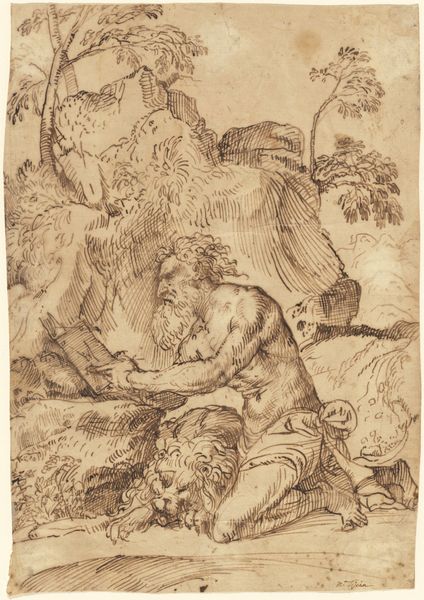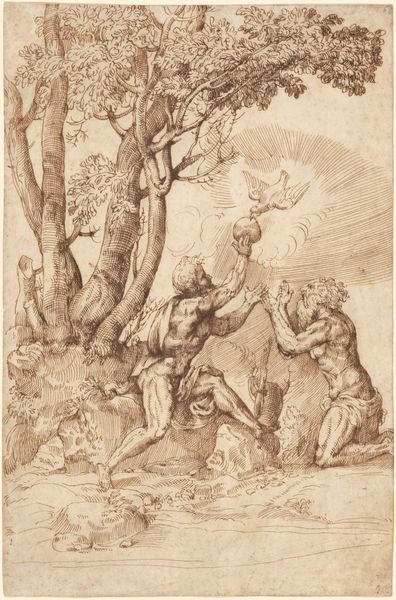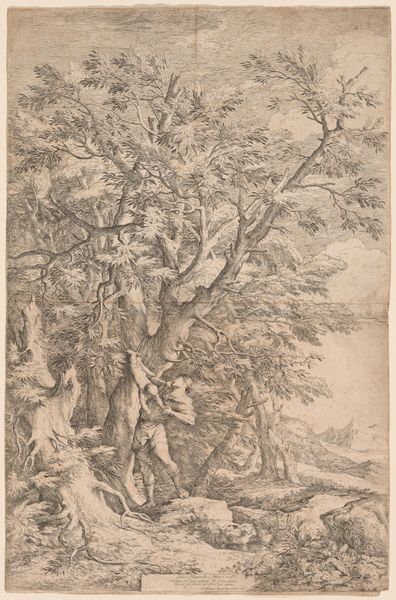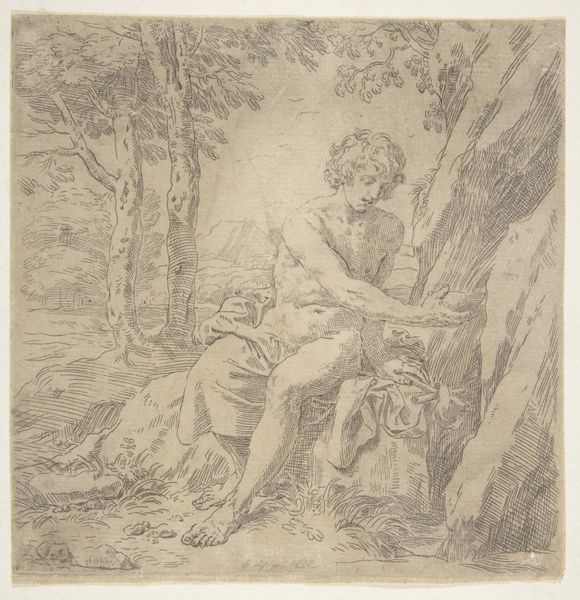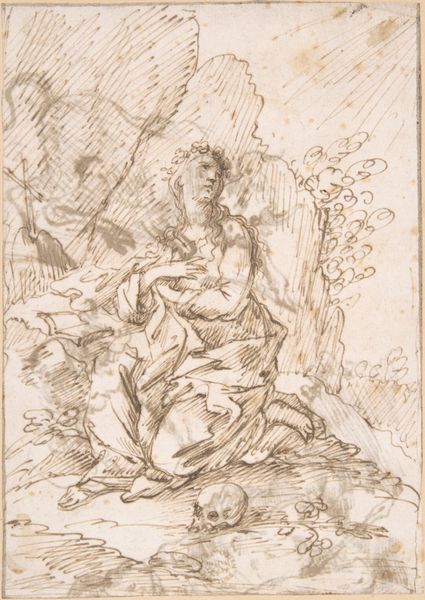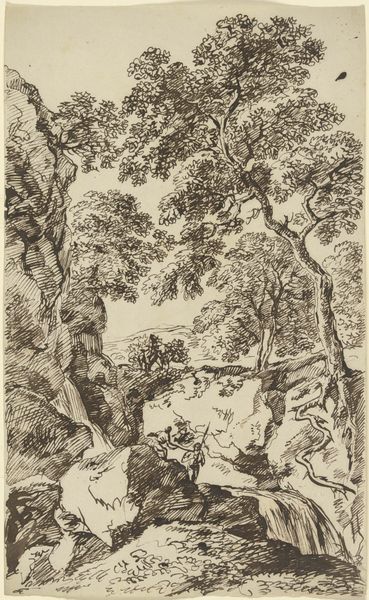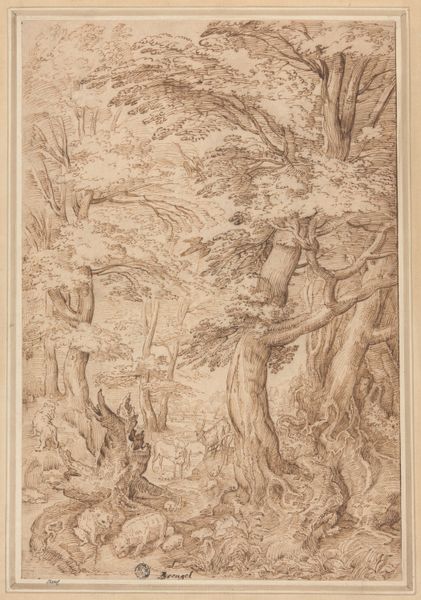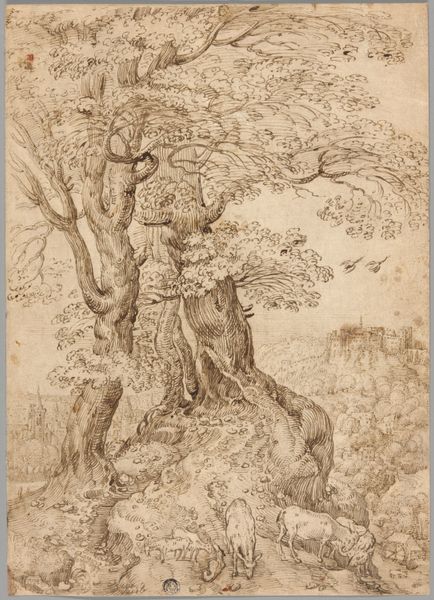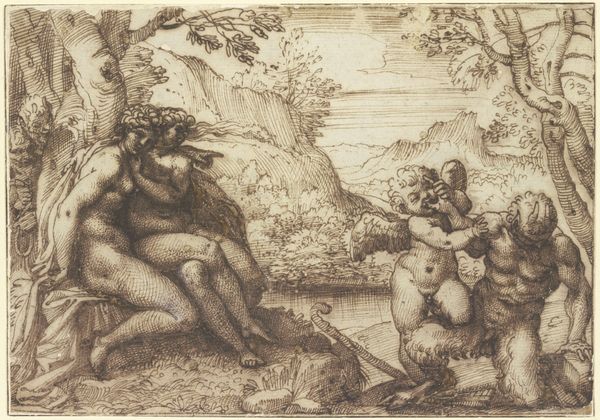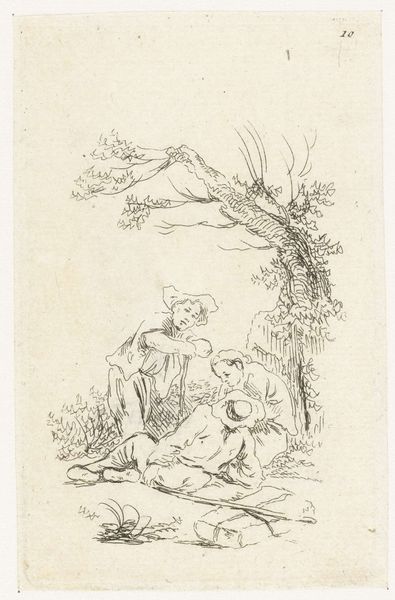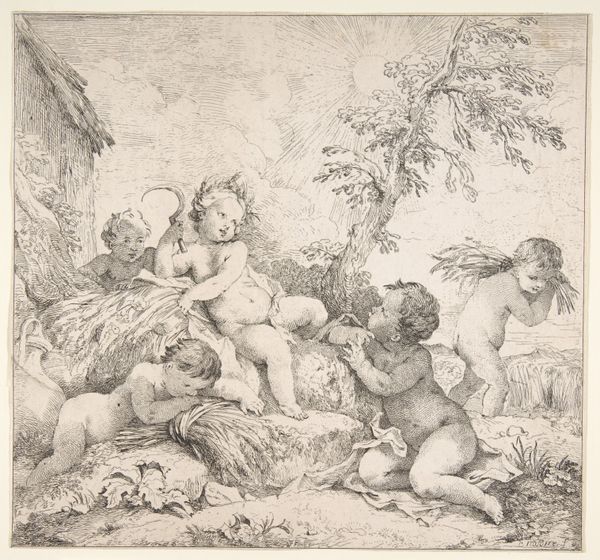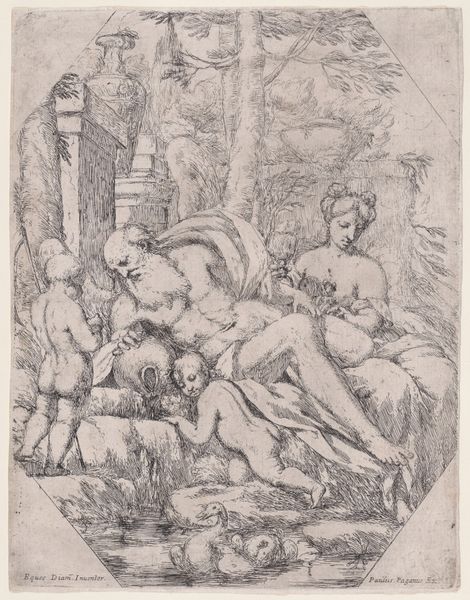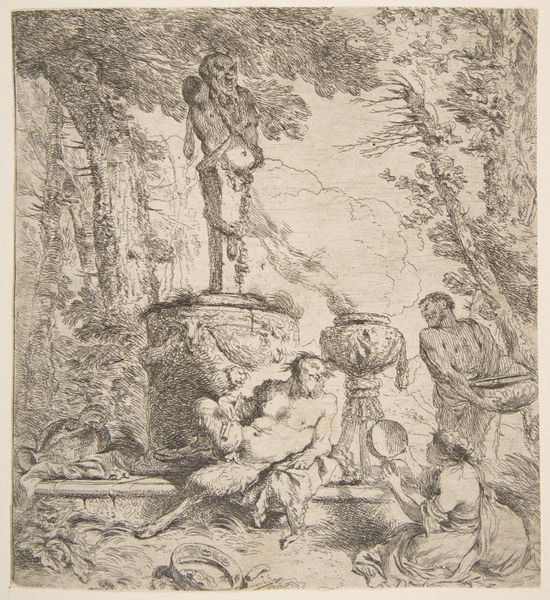
drawing, paper, ink, pen
#
drawing
#
landscape
#
paper
#
ink
#
romanticism
#
pen
#
genre-painting
Dimensions: 153 mm (height) x 119 mm (width) (bladmaal)
Curator: This is Lorenz Frølich’s “Im Wald und auf der Heide,” dating from around 1847 to 1849. It’s rendered in pen and ink on paper, currently residing here at the SMK. Editor: A pastoral scene bathed in sepia tones. There’s a contemplative stillness; the man under the tree looks almost suspended in thought, a quality mirrored by his attentive canine companions. It’s idyllic, but not without a touch of melancholy. Curator: The composition directs us. The artist strategically employs the strong vertical lines of the trees against the sprawling repose of the figure to achieve an aesthetic tension. Note how Frølich’s use of line creates contrasting textures—from the dense canopy to the smoother, open space of the background. Editor: Right, but beyond its visual elements, I am struck by its representation of labor. Leisure only seems accessible when considered as the endpoint of productive work and through nature's abundant resources. The materials themselves are humble - paper, ink - reflective of accessibility, no? Curator: Undoubtedly. Furthermore, this drawing operates within the pictorial conventions of genre painting characteristic of its era, highlighting the everyday and rural life, albeit framed by the romantic aesthetics so dear to artists of the time. The landscape takes on a near symbolic meaning, a container, and reflection of this person's internal state. Editor: And his relation with those canines… surely co-laborers, if not companions in life and leisure. One also wonders about the quality of the paper, the source of the ink, and how such materials dictated or facilitated the possibilities of representation, distribution, or appreciation during that era. Curator: I concur; there is a certain nostalgia evoked, perhaps pointing toward a societal yearning for simplicity amidst burgeoning industrialisation. Editor: So, while seemingly an artless idyll on the surface, Frølich delivers an incisive commentary. He does not present the pure beauty of nature but reminds us instead of the cultural conditions that allow this scene. Curator: Precisely. We observe that "Im Wald und auf der Heide," viewed either structurally or contextually, gifts the astute viewer with so many layers of artistic nuance. Editor: An example where material constraints of labor ultimately support the construction of romanticized values and aesthetic freedom in the picture.
Comments
No comments
Be the first to comment and join the conversation on the ultimate creative platform.
